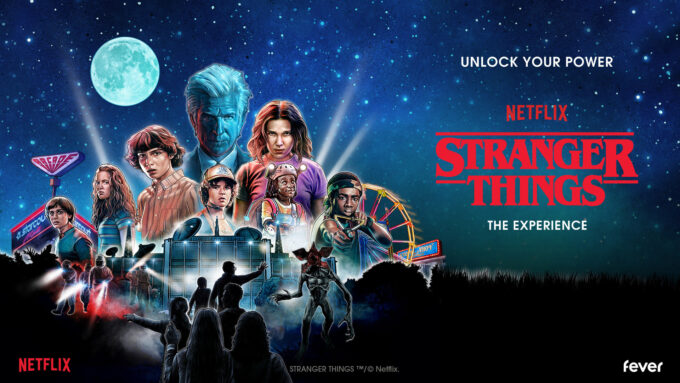
Fakery and falsehood: why prevention is better than cure
It’s possible to immunize people against false or manipulated information through simple exercises that policymakers and platforms could easily roll out....
Audio available

by Stefan Michel Published 1 December 2023 in Competitiveness • 6 min read
Who would have thought that a small mail-order video rental service company would morph into a ubiquitous media giant? Here’s how Netflix did it.
The pilot episode of Netflix’s strategic journey started in 1997. Reed Hastings founded an innovative DVD rental service company and competed successfully against much larger competitors such as Blockbuster and Walmart. But Netflix’s formula for success was not obvious from a strategic point of view for two main reasons.
The market leader, Blockbuster, had a better distribution network across the US, deeper pockets, and much stronger negotiation power with the movie studios. In addition, it was already apparent in 1997 that high-speed cable TV and the internet would challenge DVD technology. So, why would anybody bet on a much weaker startup than the market leader, with technology already at its peak?
Despite these obstacles, Netflix gained over four million subscribers by 2007, mainly because customers enjoyed the convenience of selecting movies online and receiving DVDs by mail for a monthly subscription fee, avoiding the late fee penalties and enjoying the availability of their favorite movies
Episode 2 was set in 2007 when Netflix launched its streaming service and offered customers the choice of watching movies online or on their DVD player. Netflix emerged as the innovation and customer service leader within the subscription-based digital distribution service industry. Investors were ecstatic about the stock performance of +3052% between 2002 and 2011.
Episode 3 started with a downfall. In July 2011, after its share price had reached an all-time high, Netflix announced its intention to split the company’s DVD rental and online movie streaming services by creating two separate businesses, Qwikster.com and Netflix.com. The change in its business model would entail a significant price increase.
Following angry customer protests, including a negative Twitter stream, Netflix’s CEO and founder Reed Hastings sent subscribers a personalized apology email, which only worsened matters. The market valuation fell 82% percent between July 2011 and August 2012. While the announcement of splitting the business triggered investors’ confidence loss, the underlying strategic logic was much more profound and dramatic.
The reported yearly cost for the content licenses increased sharply from about $200 million to $2 billion, which, at an annual revenue of $3.2 billion, meant that Netflix’s business model was not sustainable.
Using Michael Porter’s evergreen five forces analysis, it became clear that market power had shifted to the movie studios. Seeing that the industry bottleneck was no longer the channel (who can reach the viewers?) but the content (who owns the movie rights?), Netflix started to produce its TV shows (e.g., House of Cards, Hemlock Grove). Its early shows were all highly successful, and in 2013 it became the first streaming company to win an Emmy. Unlike the cable networks, Netflix made whole seasons available simultaneously, allowing customers to binge-watch all the episodes. In September 2013, two years after its meltdown, the Netflix share price hit a new all-time high.

Episode 4: Between 2013 and 2020, Netflix continued its global expansion by producing more content (and more localized content), causing costs to skyrocket. This was accentuated by the “streaming war” between Netflix, Disney+, Hulu, HBO Max, Apple TV, Amazon Prime Video, and YouTube, which intensified on two fronts: the competition for subscribers and content.
Experiencing a significant surge in subscriber growth by 2019, and even more so during the pandemic from 2020 to 2021, the company’s success started to appear boundless. However, the still escalating cost of producing original content presented an unanticipated challenge, pushing the company to reassess its pricing strategy.
To keep pace, Netflix significantly raised its subscription prices. However, this decision did not resonate well with the customer base. The price hike led to losing subscribers for the first time in the company’s history. By the end of 2022, Netflix’s profit margins became razor-thin, with the company barely breaking even. Its market capitalization fell 75% between October 2021 and May 2022.
Episode 5: Confronted with this financial squeeze, Netflix was compelled to rethink its strategies and monetize its content more effectively. In response to market dynamics, the company introduced several cost-effective measures. Firstly, Netflix introduced cheaper plans in developing markets to tap into the growing pool of potential subscribers with lower spending power. The company also launched a low-cost ad-supported plan, a stark departure from its traditional ad-free approach.
Additionally, to plug revenue leakage, Netflix tightened control on password sharing, a common practice among its user bases. These strategic moves marked a pivotal moment in Netflix’s corporate trajectory, essentially going against its long-held principles of “Love is password sharing” and “Simplicity is king.” These changes impacted the customer experience and fundamentally altered the company’s business model and market perception.
From the investor’s perspective, these changes signified a shift in Netflix’s identity. Historically considered a tech company and part of FAANG (with Facebook, Apple, Amazon, and Google), Netflix began to be viewed as a media company. This shift was primarily because the company’s focus had transitioned to creating, distributing, and monetizing content rather than technological innovation.
This case illustrates five important lessons for all strategists:

Professor of Management and Dean of Faculty and Research
Professor Stefan Michel‘s primary research interests are AI’s impact on strategy, pricing, and customer-centricity. He has written 13 books, numerous award-winning articles and ranks among the top 40 bestselling case study authors worldwide by The Case Centre. He is currently Dean of Faculty and Research at IMD and is also Program Director of IMD’s Strategic Thinking program. This new 8-week online program with 1-1 coaching helps professionals become better strategists while working on a concrete strategic initiative for their organizations.

10 April 2025 • by Sander van der Linden in Strategy
It’s possible to immunize people against false or manipulated information through simple exercises that policymakers and platforms could easily roll out....
 Audio available
Audio available
27 March 2025 • by Robert Earle, Karl Schmedders in Strategy
Subsidies for renewables have led to electricity prices frequently falling to less than zero, creating opportunities for consumers. ...

26 March 2025 • by Didier Cossin, Yukie Saito in Strategy
Hannele Jakosuo-Jansson, Executive Vice President of People and Culture at Neste – the world’s largest producer of renewable diesel and sustainable aviation fuel (SAF) – and a board member of Finnair, has...

24 March 2025 • by Richard Baldwin in Strategy
It may feel like Donald Trump is capsizing the geopolitical boat, but could he just be accelerating a longer-term trend in the balance of global power? Geopolitics have long been heading for...
 Audio available
Audio availableExplore first person business intelligence from top minds curated for a global executive audience